0 / 32
0 / 32
NOW Muay Thai - Thailand's best Muay Thai gyms booking platform
April 11, 2023
Muay Thai, also known as Thai boxing, is a martial art that originated in Thailand and has become popular worldwide due to its effective striking techniques and versatility in combat. Known as the "art of the eight limbs," Muay Thai employs eight different parts of the body for striking, including fists, elbows, knees, and shins. In this article, we'll take a closer look at the basic techniques of Muay Thai and how to master them for effective fighting.

1. Footwork
Footwork helps to create movement in Muay Thai, an important part of Muay Thai technique. Efficient movement through proper footwork will help you maintain balance, control your distance, and create angles for attacking, self defending or dodging opponent's weapons. The basic stance in Muay Thai is called the "boxer's stance," which involves keeping the feet shoulder-width apart, weight evenly distributed, and knees slightly bent. You should also keep your hands up to protect key points on your face and be ready to move quickly and fluidly.
There are several different footwork patterns in Muay Thai, including the shuffle step, pivot step, and the hop step. The shuffle step involves moving the lead foot first, followed by the rear foot, in a quick and fluid motion. The pivot step involves turning on the balls of your feet to create angles for attacking and defending. The hop step involves hopping forward or backward to quickly change your position.
Maintaining good footwork in Muay Thai is crucial for effective movement, balance, and striking. Remember that developing good footwork in Muay Thai takes time, practice and patience. Incorporate footwork into your training routine. Focusing on proper technique and get feedback from your Muay Thai trainer or (Kru Muay) to continually improve and maintain effective footwork in your Muay Thai training.
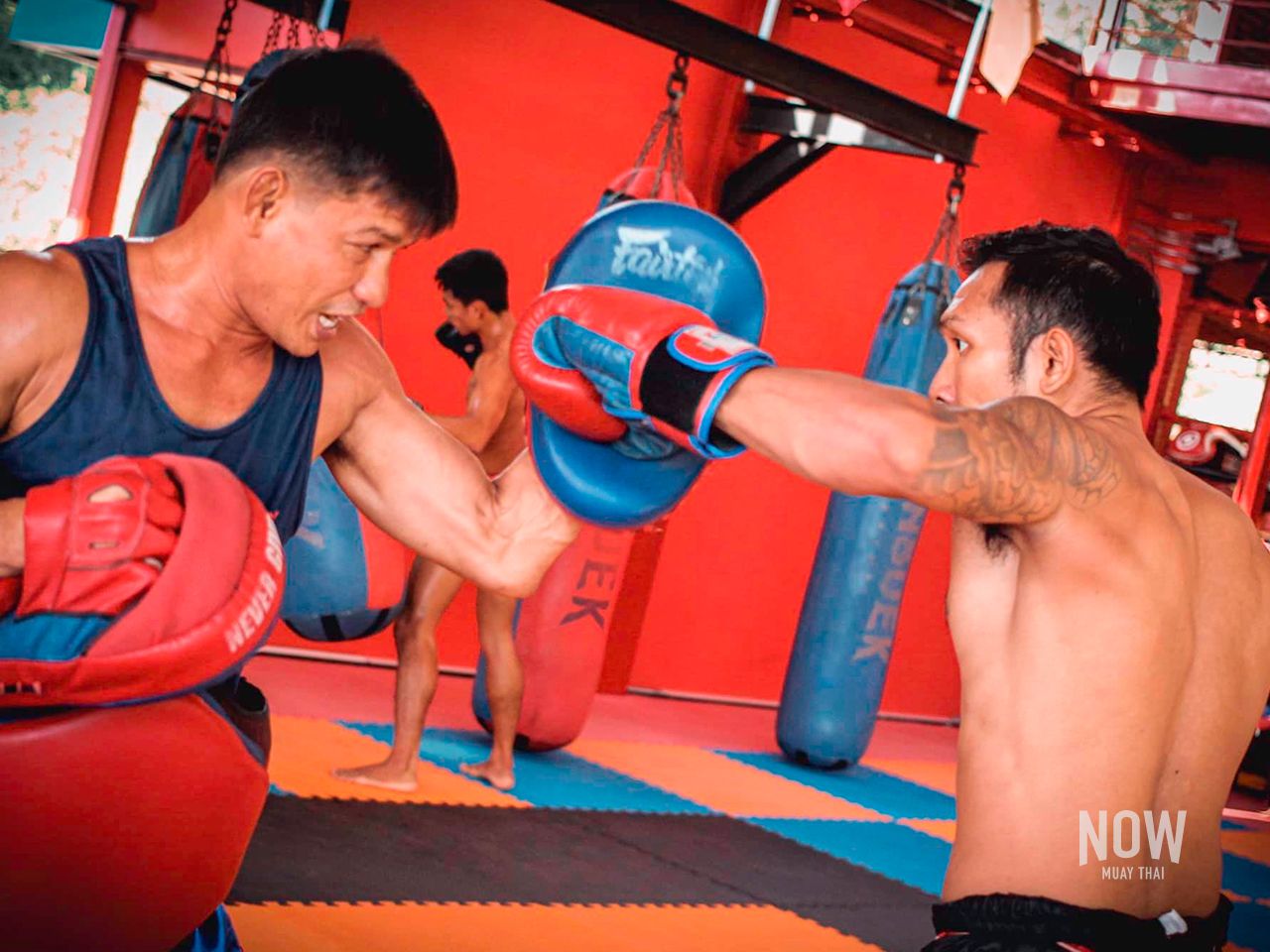
2. Punches
Punching is one of the most basic Muay Thai techniques. There are four different types of punches in Muay Thai, including the jab, cross, hook, and uppercut. The jab is a straight punch thrown with the lead hand, while the cross is a straight punch thrown with the rear hand. The hook is a circular punch thrown with the lead hand, and the uppercut is an upward punch thrown with the rear hand.
To perform a proper punch, you need to have good technique and timing. Start with the basic boxer's stance, and keep your elbows close to your body to generate power. Twist your hips and shoulders into the punch to generate more power, and make sure to retract your punch quickly after striking to protect yourself from counter-attacks.
To practice punches in Muay Thai training;
-Start with a proper stance and footwork.
-Focus on generating power from your hips and core.
-Practice different types of punches, such as jabs, crosses, hooks, and uppercuts.
-Incorporate combinations of punches in your training.
-Utilize proper punching technique, including hand placement, shoulder rotation, and follow-through.
-Train with a heavy bag, pads, or a sparring partner to develop accuracy and timing.
-Pay attention to defense and counter-attacks while practicing punches.
-Gradually increase speed and power as you improve your punching technique and stay consistent and train regularly to develop muscle memory and improve your punching skills in Muay Thai.
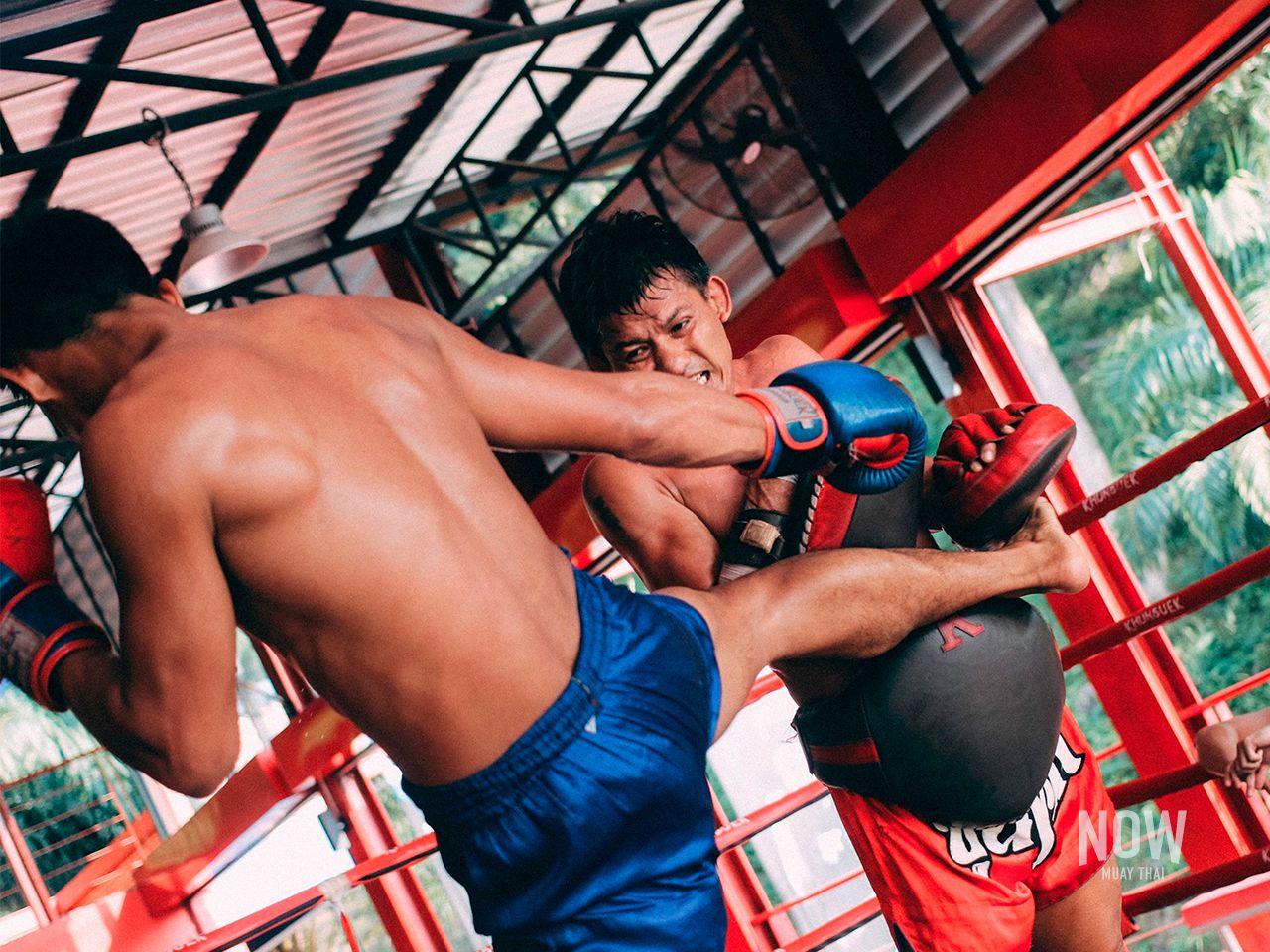
3. Kicks
Kicking is a huge part of Muay Thai. Muay Thai is known for using a variety of distinctive techniques. Including different types of kicks. Here are some of the most commonly used kicking techniques in Muay Thai:
-Roundhouse Kick: This is one of the most basic kicks in Muay Thai.
-Teep (Front Push Kick): The Teep is a powerful kick used to create distance, destroy the opponent's balance or set up other strikes.
-Low Kick: A low kick is a leg kick that aims at the opponent's thigh. The purpose is to weaken the leg and limit movement.
-High Kick: A high kick is a powerful kick that targets the head or neck.
-Switch Kick: A switch kick is a technique in which a fighter momentarily changes stance to throw a kick from the opposite side.
-Jumping Kick: Jumping kicks are advanced techniques that involve jumping or jumping to kick with greater power and speed and can be performed using a variety of Muay Thai's kicking techniques such as roundhouse kicks, front kicks, axe kicks.
To perform a proper kick in Muay Thai, you need to have good balance and technique. Start with the basic Muay Thai boxer's stance and lift your knee up to your chest before extending your leg to kick. Twist your hips and shoulders into the kick to generate more power and follow through with the kick to maintain balance and prevent counter-attacks.
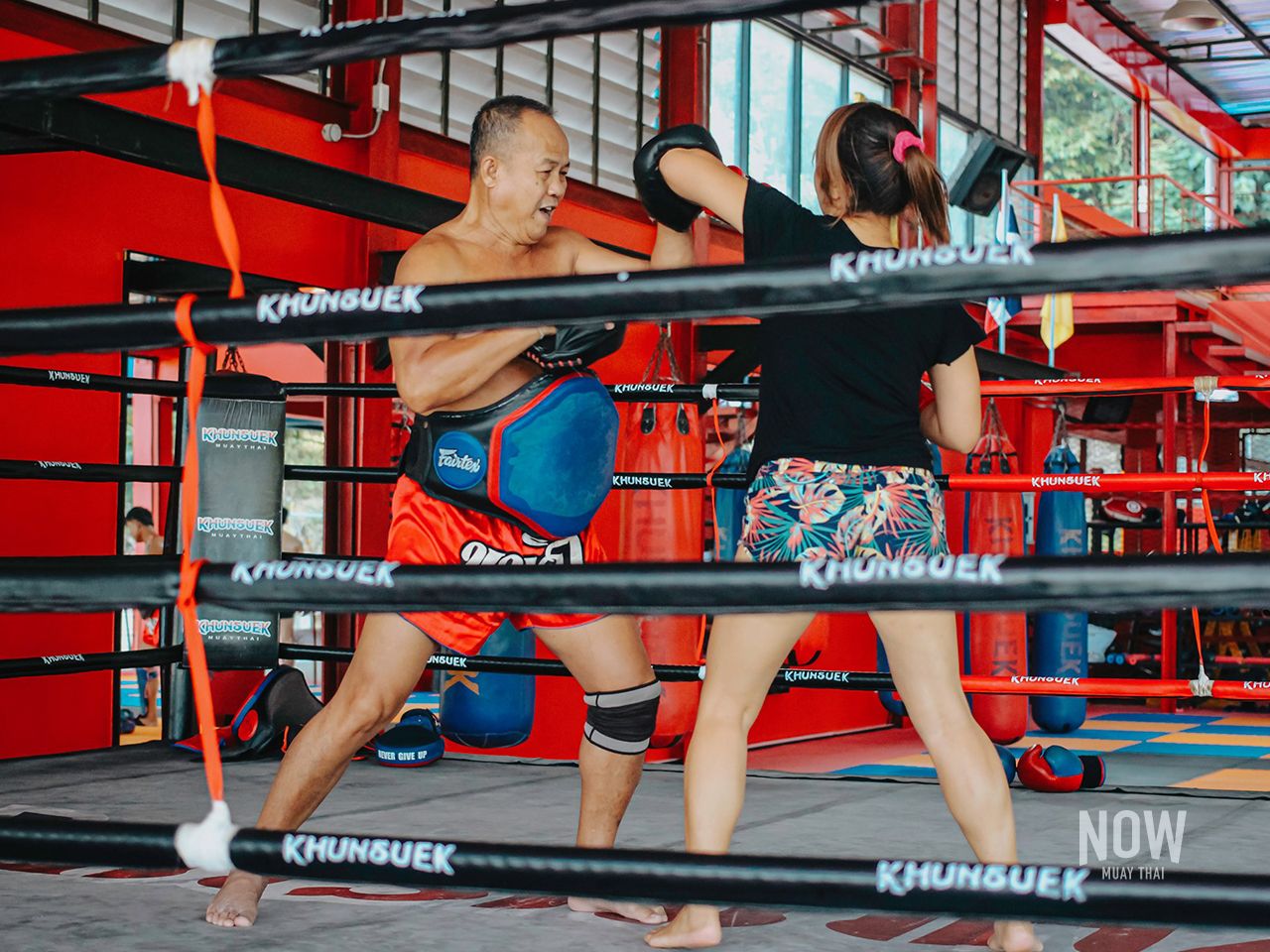
4. Elbows
Elbow strikes are one of the most powerful techniques in Muay Thai. “Elbow” is a weapon that uses the least area of attack. But it is the most dangerous weapon. Everyone agreed that "Elbow" is the most dangerous weapon of Muay Thai. There are various different types of elbow strikes in Muay Thai, including Side Elbow is one of the most straightforward elbow techniques, Framing : elbow can be used for defensive purposes like framing, Downward Elbow - an effective way to get past your opponent’s guard, Spinning Elbow - one of the flashier elbow techniques used in Muay Thai, Upward Elbow - a great for getting past your opponent’s guard like downward elbows, Snap Elbow - one of the fastest elbow strikes you can throw. There are many elbow techniques in Muay Thai that you can learn and practice from Muay Thai trainer (Kru Muay) in Muay Thai training camp.
To perform a proper elbow strike, you need to have good technique and control. Keep your elbows close to your body and use your body weight to generate power. Aim for the opponent's head, lower face and chin.

5. Knees
Knees are one of the most powerful weapons in Muay Thai and help differentiate it from other martial arts as well as elbow strikes. Knee can attack any area of the opponent from the thigh to the head, the knee strike can easily knock the opponent when they land on the head or chin. But targeting the specific areas of the body can cause severe pain, broken ribs, muscle damage and loss of consciousness. Knee techniques are quite a difficult technique to learn because controlling the knees while maintaining balance is more challenging than throwing punches or kicks. There are four types of knee strikes in Muay Thai, including the straight knee, the diagonal knee, the flying knee, and the jumping knee. Knee strikes can be used in close-range combat, to create distance, or as a counter-attack.
To perform a powerful knee strike, you need to have good balance and technique. Start with the basic boxer's stance and lift your knee up to your opponent's body before driving it forward to strike. Twist your hips and shoulders into the strike to generate more power and follow through with the strike to maintain balance.
A right Muay Thai gym or Muay Thai trainer in Thailand will invariably help you develop more powerful knee strikes. Generating knee power isn't the same as lifting massive weights in the gym or jogging ten miles every day. It takes a lot of emphasis on Muay Thai technique to practice regularly before you can own those powerful knees.

6. Clinching
Clinching is a technique used in close-range combat to control your opponent's movements and to set up strikes. In Muay Thai, clinching involves using your arms to wrap around your opponent's neck or arms while controlling their body with your knees. Clinching can be used to wear down your opponent, to create openings for strikes, or to defend against takedowns.
To perform proper clinching technique, you need to have good balance and control. Use your arms to control your opponent's movements, while using your knees to create pressure and to prevent your opponent from escaping. Make sure to stay balanced and to keep your posture upright to prevent your opponent from taking you down.
Learning how to utilize the clinch and the clinch range in Muay Thai is an important part of your Muay Thai training. Make sure you have fun training with a good partner and find all the ways it can help you in control while you're in the ring. It is important to understand how to clinch both offensively and defensively. Regularly practicing and training through clinching with your Muay Thai trainer or partner in Muay Thai gym will help you to learn how to modify the clinch to be used appropriately.
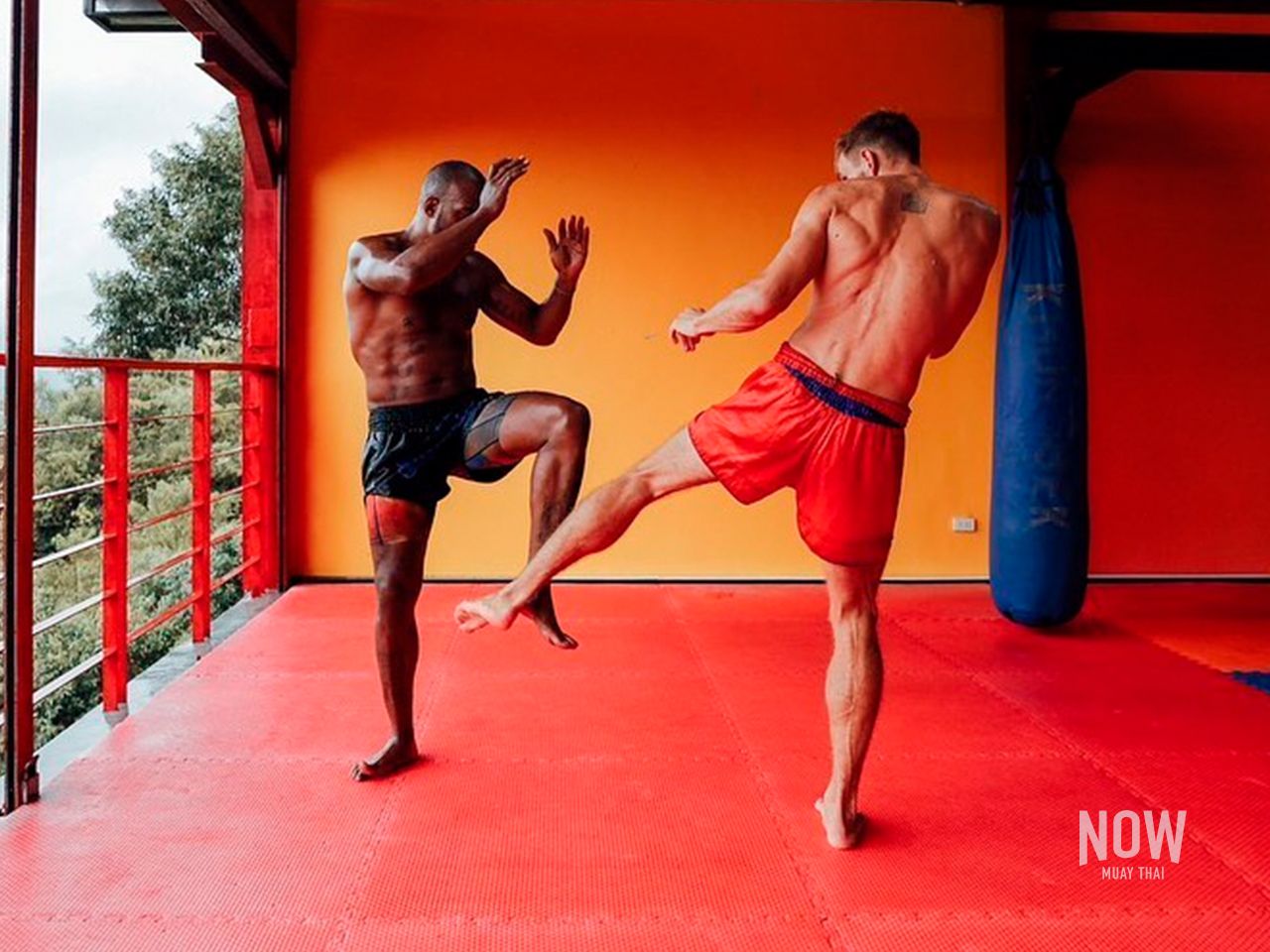
7. Defense
Defense is an essential part of Muay Thai technique. Proper defense helps you to avoid getting hit, conserve energy, and create opportunities for counter-attacks. The basic defensive techniques in Muay Thai include blocking, parrying, and evading.
Blocking involves using your arms or legs to intercept an opponent's strike, while parrying involves redirecting the opponent's strike with your own strike. Evading involves moving your body out of the way of an opponent's strike. To perform proper defense, you need to be aware of your opponent's movements and to have good reflexes and timing.
Remember that defense in Muay Thai training is not just about blocking or evading strikes, but also about maintaining awareness, distance management, and smart decision-making. It's important to prioritize safety and proper technique while practicing defensive techniques to protect yourself and avoid injuries during training or sparring sessions.
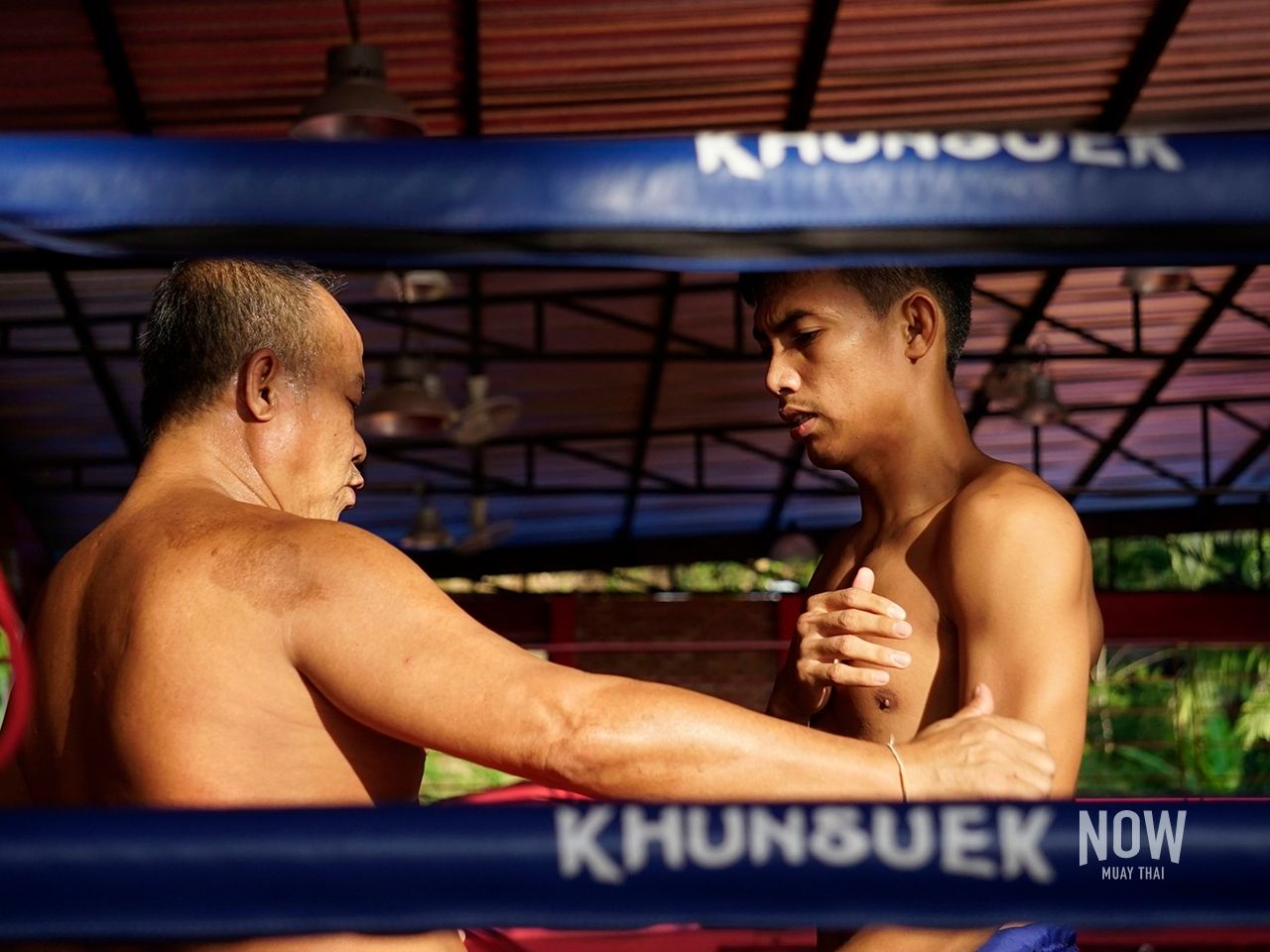
8. Strategy
Muay Thai is a highly competitive and physically demanding combat sport that requires a well-thought-out strategy to be successful.
Key strategies in Muay Thai are consisted of;
-You should be versatile and skilled in all aspects of the sport, including striking, clinching, and grappling.
-Balance between offense and defense, you need to be proficient in both attacking and defending techniques, such as punches, kicks, knees, elbows, and clinching, while minimizing the risk of getting hit.
-Proper distance management is crucial in Muay Thai. You should control the distance between yourself and the opponent, using footwork, timing, and range-awareness to their advantage.
-The clinch is a unique aspect of Muay Thai and a key strategy for controlling opponents and delivering powerful strikes.
-Strategic Strikes are needed, you need to strategically choose their strikes based on the opponent's weaknesses, timing, and positioning.
-Muay Thai sport can be physically grueling and demanding, so a good strategy involves having excellent conditioning and endurance.
-Mental toughness and focus are essential in Muay Thai. You need to stay composed, stay aware of their surroundings, and make smart decisions under pressure.
-A solid Muay Thai strategy includes proper training and preparation. This includes regular training sessions in Muay Thai gym or with your Muay thai trainer, practicing by sparring, pad work, bag work, and drills to hone skills, can help you to improve technique and build confidence.
-You should study your opponents' fighting styles, strengths, weaknesses, and tendencies to develop a strategic fight plan.
-Finally, a successful Muay Thai strategy requires adaptability. You need to be able to adjust your fight plan anytime. This may include changing techniques, tactics, or strategies to gain an advantage.
In conclusion, mastering the art of Muay Thai technique requires a combination of physical and mental skills. By developing proper footwork, punches, kicks, elbows, knees, clinching, defense, and strategy, you can become a highly skilled Muay Thai practitioner. However, like any martial art, it takes dedication, practice, and patience to achieve mastery. So, keep training, stay focused, and never give up!
When searching for Muay Thai gyms or trainers in Thailand, it's important to consider factors such as location, reputation, quality of training, cost, and safety. It's also a good idea to read reviews, check credentials, and contact the gyms or trainers directly to inquire about their training programs and facilities. Visit nowmuaythai.com The #1 Muay Thai booking platform. that will connect you to the best Muay Thai trainers and the right Muay thai gyms throughout Thailand.
Learn more about Muay Thai
Back






